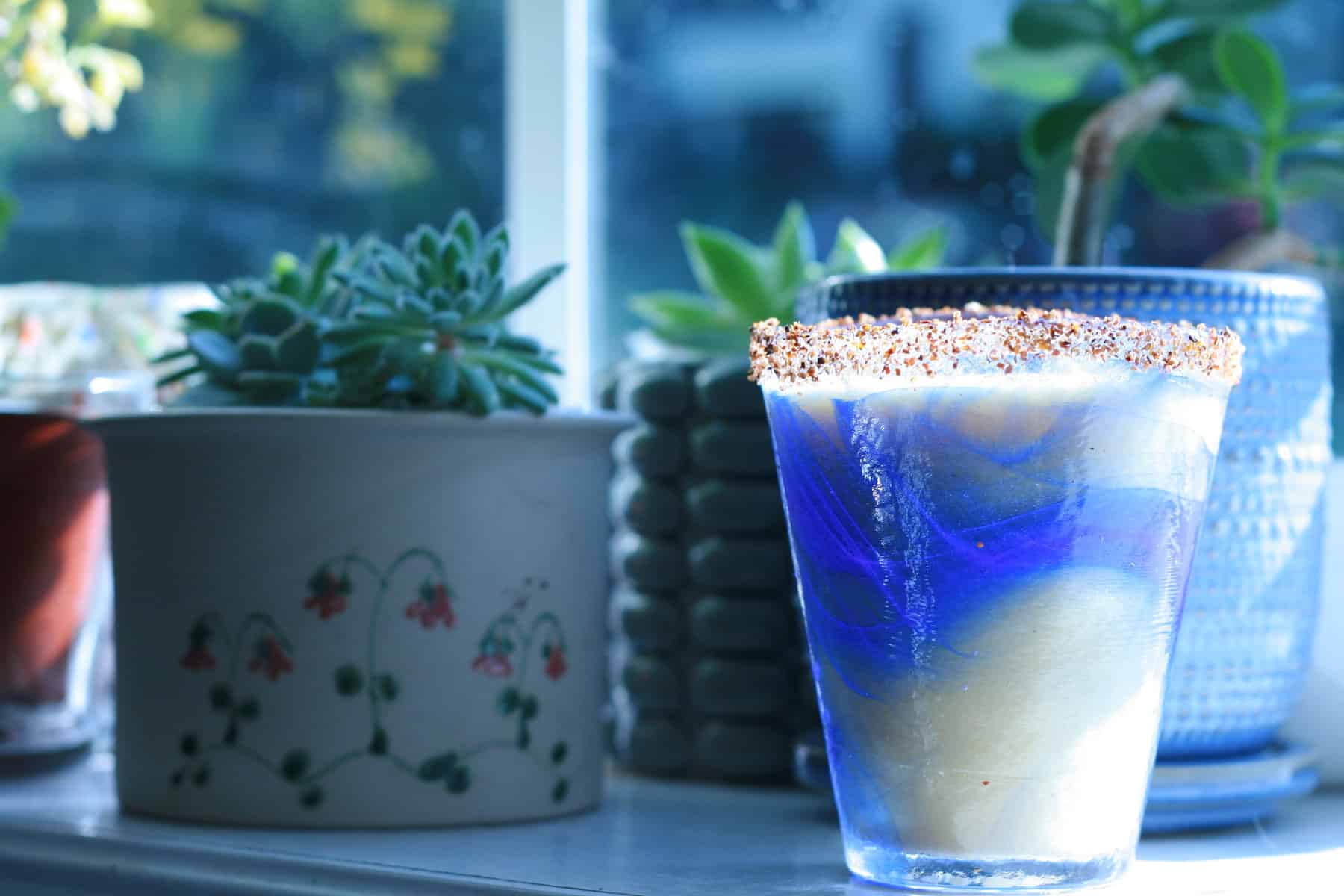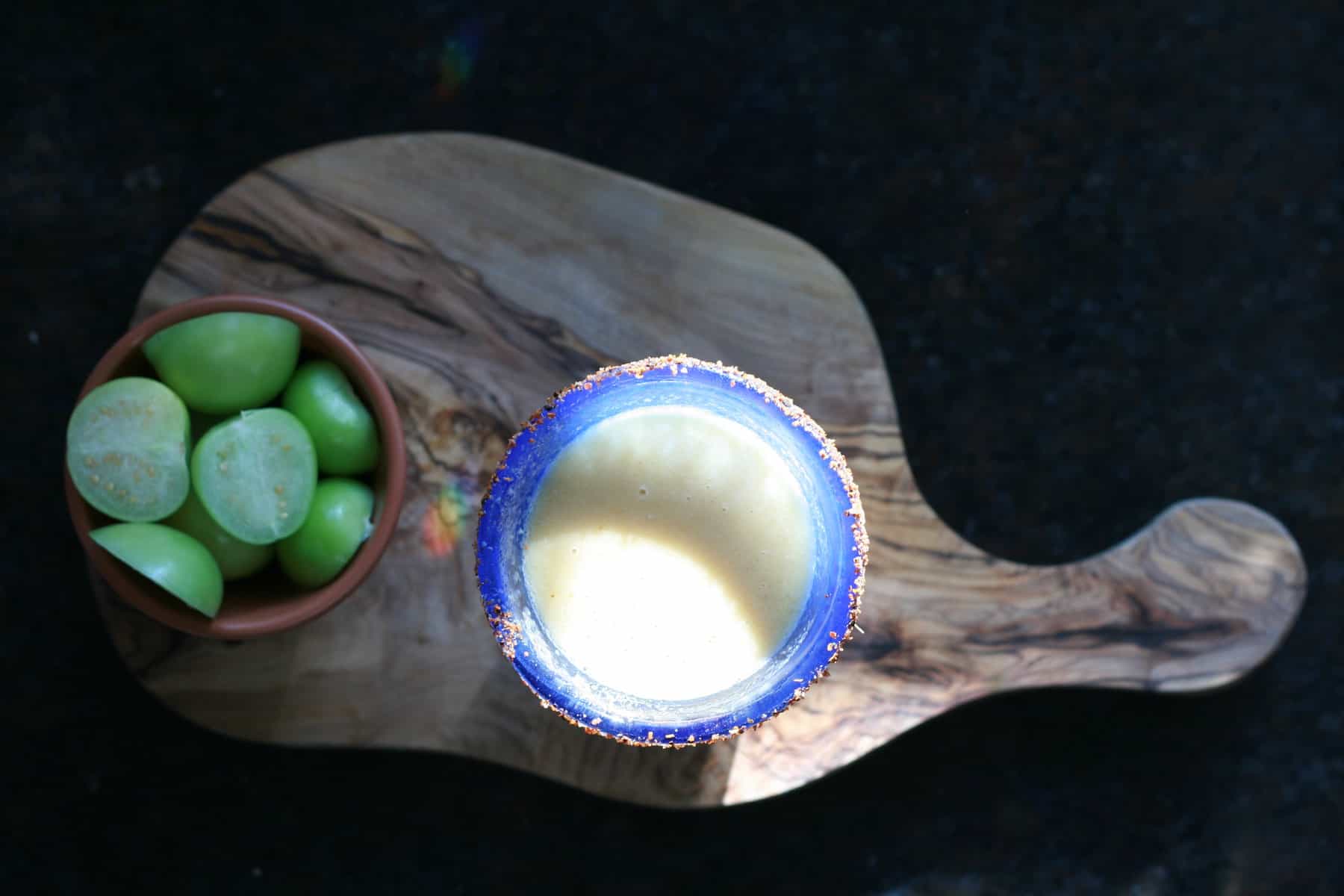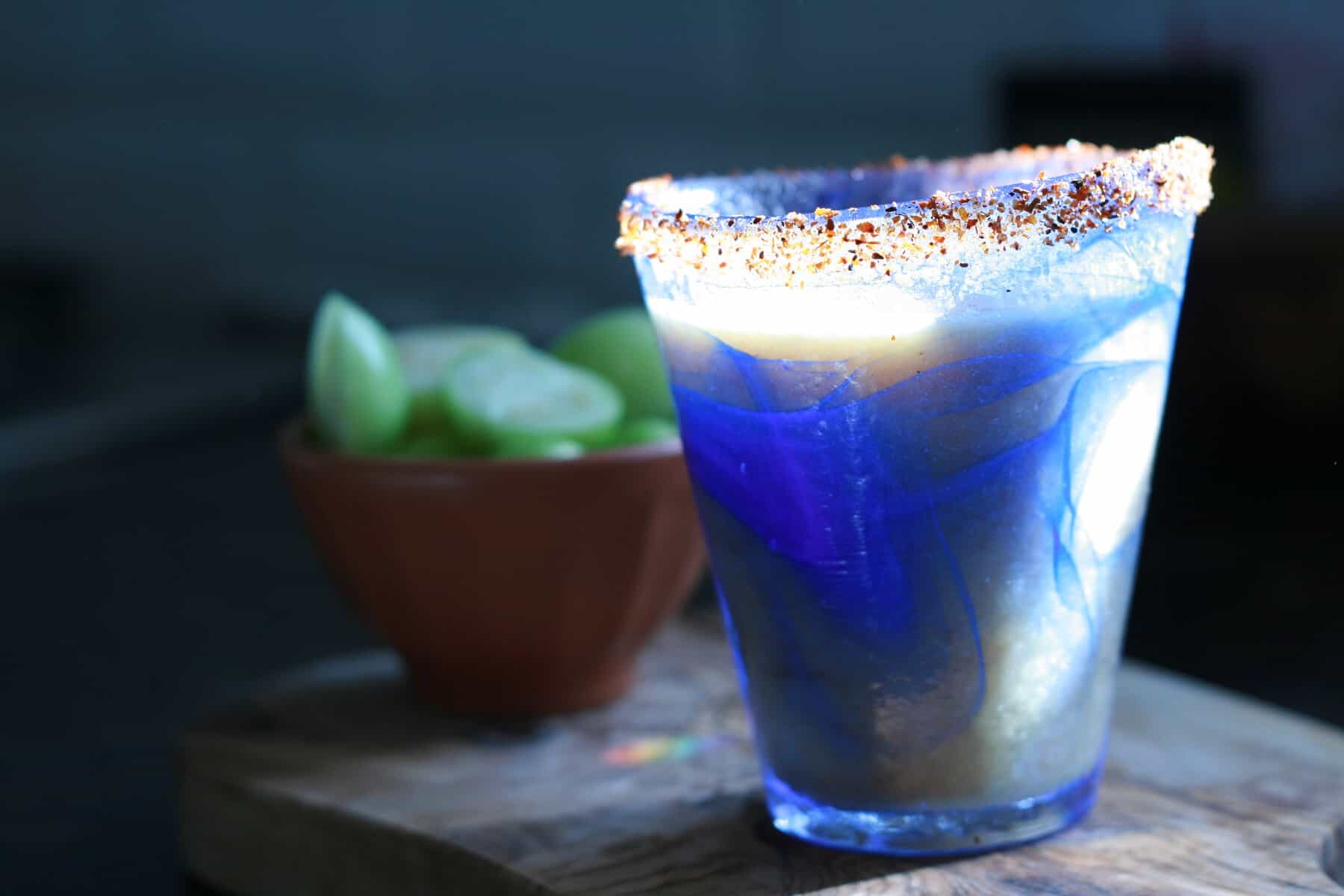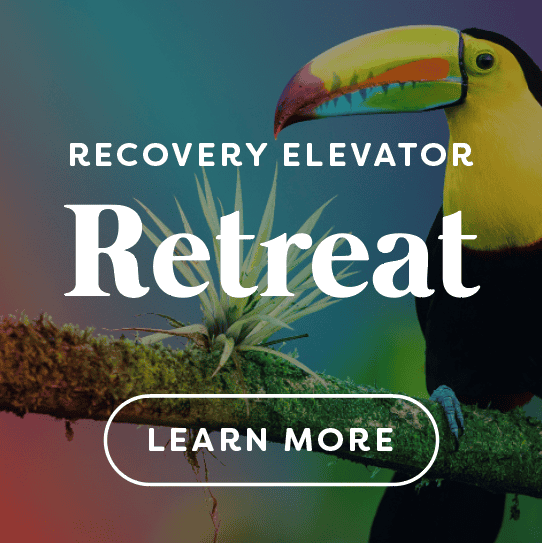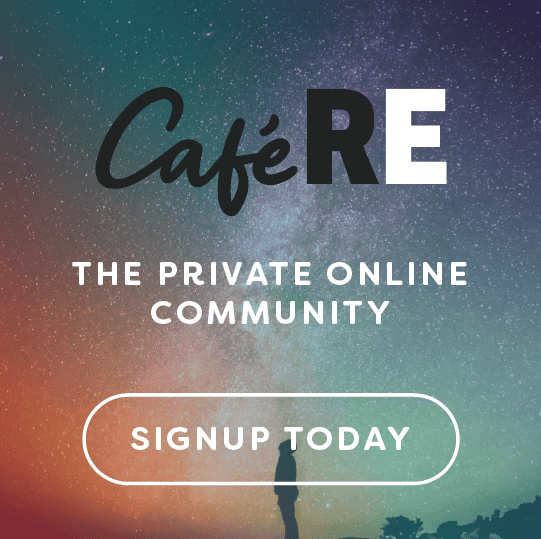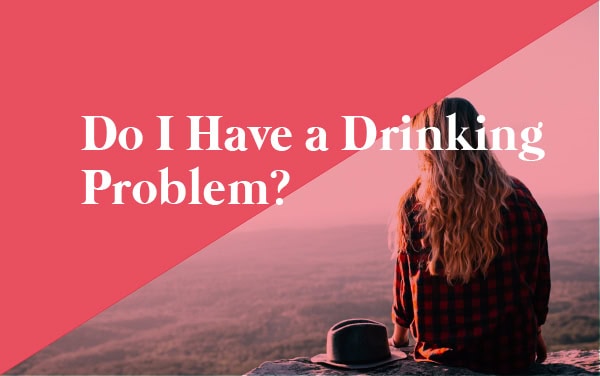
by Kerri MacFarlane | May 15, 2023 | Alcohol Free, Blog, Helpful Tips, Resources
Today is the day! Today is the day we are going to find out if you have a drinking problem…or not. Are you ready?
For Paul, when it finally sunk in that he did indeed have a drinking problem (and a good one at that!) two things happened.
First…he was like, “Oh F&#K!”
Then…immediately after, as this truth spread into his body, to his bones, to his conscious, his unconscious, to the heart, to the liver, something neat happened. An incredible amount of energy was instantly liberated.
For two reasons.
- The stigma or label of an alcoholic didn’t change who he was. He was still alive.
- But more importantly…all the energy, the incessant thinking he had of…
- Do I drink, or not?
- Do I have a problem, or not?
- How am I going to control my next session of drinking?
- How am I going to hide it?
- Let’s do our best not to black out before 8 pm.
- Do I have enough shitty box wine back home?
- Let’s not let people know we’ve already had 9 drinks before meeting up at the bar.
ALL of that went away instantly.
In fact the worst place a person can be with a drinking problem is in limbo. The do I or don’t I phase. (Paul covers this in Episode 417).
So for this diagnostic, we are going to use the test listed in the DSM 5, or the diagnostically statical manual which is what most psychologists and/or therapists have somewhere on their shelves.
There’s 11 YES or NO questions. If you answer YES to 2 of the questions, if you meet 2 of the 11 criteria, within the past 12 months, they call it an Alcohol Use Disorder.
THE TEST
- Do you sometimes have difficulty controlling how much you drink or for how long you drink alcohol?
- Have you made unsuccessful attempts to cut down your drinking?
- Do you sometimes spend a significant amount of time drinking or recovering from drinking?
- Has your alcohol use had any negative consequences at home, school, or work? (Have you ever lost time off work because of your drinking?)
- Has your alcohol use had any negative consequences to your relationships or social life? (Have you ever concealed how much you drink? Has anyone ever commented on your drinking?)
- Have you continued to use despite any negative consequences?
- Have you put off things or neglected to do things because of your alcohol use? (Have you ever disappointed your family or friends? Have you ever missed a family event?)
- Do you occasionally have strong cravings for alcohol?
- Has your tolerance for alcohol increased? Are you able to drink more than you did before?
- Have you experienced withdrawal symptoms the next day after drinking? (Have you ever been shaky or sweaty that evening or the next day?)
- Has your alcohol use led to any dangerous situations? (Have you ever been charged with impaired driving?)
Paul has always strived to be a good student, and was “happy” to report a score of 100%. 11/11. For shits and giggles, let’s’ cover what it means if you didn’t ace this like he did.
WHAT IT ALL MEANS
The presence of at least two of these symptoms means you have an AUD. If you have two to three symptoms, it’s considered mild; four to five symptoms is considered moderate; six or more symptoms is considered severe. (If you don’t fall into the severe category, a mild diagnosis can still warrant concern, as it may be the start of a larger problem.)
A couple things before we wrap this up. If you have a drinking problem, life isn’t over…in fact, it’s just beginning.
Some of you may have just learned you have a drinking problem. If this is devastating to you, go to Episode 411 where Paul talks about the grateful alcoholic.
Paul had one more bit of info in his notes from Episode 428 If you find yourself listening to a sobriety podcast (or reading this blog), and you’re not a therapist, a doctor, or listening so that you can support a loved one, then YOU have a drinking problem. If you question whether or not you have a drinking problem, you just answered that question. The bigger question is…what are you going to do about it?
***Taken from Recovery Elevator Podcast, Episode 428, host Paul Churchill***
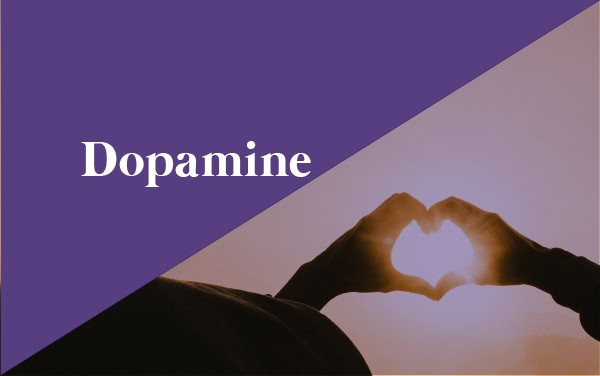
by Kerri MacFarlane | Mar 15, 2023 | Alcohol Free, Helpful Tips, Science and alcohol
Let’s talk about dopamine!
If we are to properly discuss alcohol addiction we will soon come to the molecule dopamine. Dopamine is a neurotransmitter commonly coined as the pleasure molecule, but that’s not entirely correct. Dopamine is more accurately described as the learning molecule. However, it’s definitely a combination of both. Dopamine is the molecule that has kept us alive for thousands of years. It’s the chemical that drives us to eat, to find warmth, shelter, to find a mate, and puts a smile on our faces when we high five or hug another human being.
Another neat fact about dopamine is once we take action towards a goal, we get a little blast of dopamine. The human dopamine system is like a see-saw, as a dopamine hit brings about pleasure, and then is quickly followed by pain or a lack of dopamine. What goes up, must come down. This is to keep us motivated and it worked great when we were hunters and gatherers and we had to constantly search for our basic needs – food, water, and shelter.
But, in the modern world we live in a world of abundance rather than scarcity, and our brains have not evolved for the “fire hose of dopamine” of sugar, social media, TV, sex, drugs, ALCOHOL, or any number of dopamine-triggering stimuli so easily available.
In short, it could be said that in the modern era, we are all addicts running from fix to fix, which is a reason why on average people open their smartphones around 100 times per day averaging 2,600 swipes, taps, or touches.
Many of us reached a phase in our drinking when we no longer drank to feel good, instead we drank to feel “normal”. I know there are some heads nodding right now.
This is 100% tied to dopamine.
When we drink we open the flood gates to the dopamine system, and then the dopamine system tries to reset itself by creating a deficit the next day, or next couple of days. We then are even more motivated to reach for that drink to offset the treacherous feelings of the dopamine deficit. Think merry-go-round. ?
When people do cold plunges, or ice baths, it has the same effect on the dopamine system..but backwards. You experience the pain of the cold water first, then you get a rush of feel good dopamine. Cold plungers are chasing dopamine just like alcoholics.
Countless books have been written on what addition is and its causes. Most would agree it isn’t any one thing, but many things. One reason why some are more susceptible for addiction is based on the makeup of their dopamine system. We have nearly 8 billion humans on the planet and there are 8 billion different dopamine systems. We don’t all experience pleasure and pain the same. When we put our hands in front of a fire, we don’t all feel the warmth equally
It’s quite possible that those who struggle with addiction have enhanced dopamine receptors. Does everyone have the same experience when they take their first drink? Absolutely not. But one commonality that Paul has noticed after interviewing hundreds on the Recovery Elevator podcast is that when those of us that struggle with alcohol take our first drink there’s a light show going off in our dopamine system.
On the flip side, Paul has asked many normal drinkers what their first drink was like, and the common response was eh, it was okay.
This lends truth to the idea that those with enhanced dopamine receptors are more prone to addiction.
Let’s get real. We need that dopamine hit. As human beings after all, it’s what keeps us going, it’s what keeps us alive.
So what are healthy, or healthier, ways to get that dopamine hit? What is the best form of dopamine? Or perhaps the safest?
Well here’s a couple of ideas…
Intimate connection with other human beings. “We know that when we make intimate human connections, oxytocin binds dopamine, releasing neurons in the reward pathway and dopamine is released and it feels really good.”
The opposite of addiction is connection.
Radical honesty – Dopamine is released when we are radically honest with ourselves and others. Studies show that when we are honest about who we are, what we can and can’t control, a healthy amount of dopamine is released. (To be fair, dopamine is also released when we are dishonest.)
Here’s another thing to remember with dopamine. Neurologically, neurons that fire together wire together. When we drink we reinforce dopamine pathways related to alcohol making it harder for us to release dopamine in healthier ways.
If you’re looking for more info on Dopamine, I highly recommend the book Dopamine Nation, by Anna Lembke.
***Taken from Recovery Elevator Podcast, episode 415, host Paul Churchill***
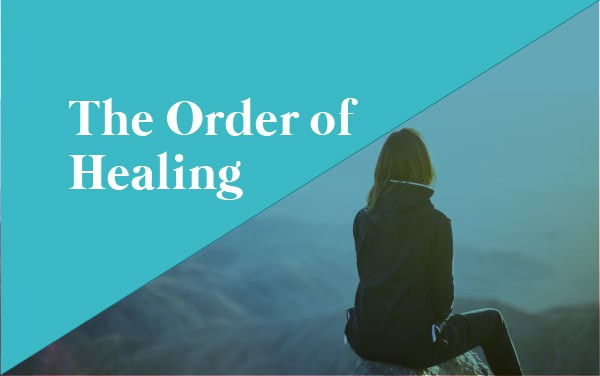
by Kerri MacFarlane | Dec 15, 2022 | Early Sobriety, Expectations, Helpful Tips, Resources
Let’s talk about the order of healing when you quit drinking. We’ll also put a time frame on it…more or less place holders for what you can expect. As with everything in recovery…your time frame may not exactly match up with what is outlined here…but should be close! ??
When we ditch the booze the healing happens in the reverse order as the destruction.
When we slide down the chasm of addiction we are afflicted spiritually first, as that is the first connection that becomes severed. Next up is our mental health, and then the physical body fails. The body can’t keep up with the amount of poison entering it and organs begin to fail, think liver and pancreas.
So the destruction happens spiritually, mentally and then physically.
The healing happens in reverse.
We heal physically, mentally and then spiritually. It’s a triage of sorts. Keep in mind there is always overlap. You won’t say, okay, I’m physically strong, now let’s work on the mind. In addition, the three will always be a work in progress.
Good news here, you don’t need to initiate the steps of this healing process. As long as you do the following, the intelligence of the body will take over.
Here is what you need to do.
1️⃣. Ditch the booze
2️⃣. Fuel the body with healthy fuel. Food that is alive..aka: greens, veggies, fruits, and try to cut down on meat. At least for a bit.
3️⃣. Cut back on sugar and caffeine intake. Here at RE we love our ice cream…so green light on the ice cream in the first 15-30 days, but try to cut back to 1-3x per week. Caffeine, 1 cup per day. This is mostly to help with relaxation and sleep.
4️⃣. Moderate movement. Walk, hike, jog, stretch, yoga, weights…for 20 min, 3x per week.
5️⃣. Here’s the fun part – Recovery! This could be AA, we have Café RE, Smart Recovery, Treatment, IOP, etc.
On day 1 we begin healing physically. The cells in the back of the mouth, the throat, the stomach, liver and pancreas are the first to say, thank you!!
Let’s talk about weight. If you lose weight, great! But there’s a good chance you’re going to gain weight. Beer, wine, spirits are basically empty calories, or the same as a moldy gummy worm. You may see your body expanding in your first 30 days, which is beautiful. There is more of you to love. A book Paul recommends to help fuel your body properly is The All Day Energy Diet by Yuri Elkaim.
The physical restoration component is anywhere from 3-12 months depending on how far you rode the shit storm of addiction.
Then begins the real fun stuff…the mental work, which is anywhere from 6 mo -1.5 years. In active addiction there is chaos internally. There is no coherence with the body and the mind. After we find our footing physically, the brain seemingly is going to go haywire. You won’t naturally find yourself in the present moment, but this is the time to really focus on every task at hand. Washing the dishes is our recovery work.
A big part of the mental healing is letting the hypothalamus, pituitary and adrenal axis settle down. These three organs control the stress response. Cravings and moments where you’re triggered begin to smooth out once this stress mechanism comes back down to earth.
The mind and body will thank you for getting off the rollercoaster of emotions and rock bottoms. Those are stressful and wreak havoc on our inner peace. At the tail end of the mental healing is when something neat happens.
In fact, it’s extraordinary.
This is when we have the capacity to recognize we are not the thoughts, but the one who experiences them. Or as Eckhart Tolle says, life is the dancer, and we are the dance. This is the bridge to the spirituality component of our healing.
As the Swiss, 20th century analytical psychologist Carl Jung says – we enter a spiritual dimension when we begin experiencing synchronicities in life. Or we almost see the bread crumbs confirming we are on the right path. Jung was a firm believer that there are no such things as coincidences and everything is connected. Or interdependent. Both in the physical and the dream world. According to Jung, this metaphysical state of living occurs when we are in balance.
When we are in a healthy dance with time and congruent with the natural flow of life, this is when those seemingly synchronistic events take place. They are quite powerful to be honest. They make you feel connected to something for sure. Paul says, to be fair, he did experience these synchronistic events before quitting drinking, but it was like once every couple of years and nowadays, it’s weekly and sometimes daily.
One reason why healing spiritually comes last is because it helps to make this connection in times of repose, sitting, meditating or focusing on the breath.
Paul says, “I don’t know about you, but there was 0% chance I was sitting in lotus position to connect with a higher power in my first 2-6 months. Probably not even the first two years. Meditating for me at first, was absolutely brutal. But as I progressed, I began to enjoy it, and with some meditations, I would feel euphoria in parts of my body and once I think the best word to describe what happened was astral travel.” – (He knows it sounds strange. ?)
So…that’s the most common pathway when it comes to healing from a drinking problem.
There is a concept to describe the initial phases of this which is PAWS. Short for Post Acute Withdrawal Syndrome. This is your body, mind, heart, organs, and soul, recalibrating – finding a new homeostasis. Please don’t hit the eject button if you have a rough day or 20. After chaos, calm is always on the horizon. This is a universal law. PAWS lasts anywhere from 3 months to a year or two…. Yea it can be uncomfortable, but it’s preferable to the perilous road of addiction.
***Taken from Recovery Elevator Podcast, episode 404, host Paul Churchill***
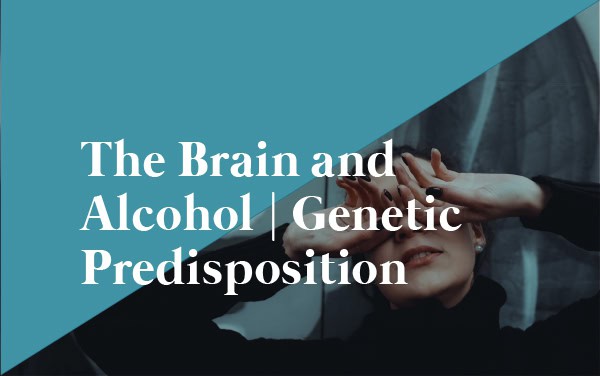
by Kerri MacFarlane | Oct 15, 2022 | Alcohol Free, Blog, Helpful Tips, Resources, Science and alcohol
Let’s talk about science and alcohol. It’s a pretty interesting and popular subject when the topic of recovery and sobriety gets brought up.
But let’s keep in mind that it’s not enough to rely on science and information to ditch the booze. Yes, it’s interesting and knowledge is power, but please don’t solely rely on knowledge, science and information alone to quit drinking. If we could read or listen ourselves out of a drinking problem, well, the problem would be solved. ??
Paul loves the science part of addiction and recently did a podcast intro on just that. (RE Episode 396)
Paul got most of his info from a fantastic podcast episode from the Huberman Lab Podcast, What Alcohol Does to Your Brain, Body & Health| Episode 86. I highly recommend you check it out and listen when you get a chance…Dr. Huberman goes into great detail in this 2 hour episode and even those without a drinking problem will find it interesting and beneficial.
Andrew Huberman, Ph.D., is a neuroscientist and tenured Professor in the Department of Neurobiology at the Stanford University School of Medicine.
Alcohol and the brain. ??
Alcohol has many biochemical and neurochemical effects on the brain. There are dramatic changes in the neurons that control the release of serotonin when we consume alcohol. Serotonin is the feel good chemical and 80% of it is created in the gut. When we mix alcohol and serotonin it gets converted into acetaldehyde. Acetaldehyde damages your DNA and prevents your body from repairing the damage. A toxic buildup of acetaldehyde can increase your cancer risk.
This acetaldehyde acts as a toxin at the very synapses and the connections between the serotonergic neurons and lots of other neurons. In other words, when we ingest alcohol, the toxic effects of alcohol disrupt those mood circuitries.
It does this first ☝?by making them hyper active.
This is why people become happy or more talkative after a couple of sips of alcohol. But when the alcohol wears off the serotonin levels and the activity of brain circuits really start to drop and this is why most people head to the bar for a second round. Now typically what happens when people ingest their 3rd, 4th or 5th drink, there is an absolute zero chance of them recovering that energized mood they experienced on the first drink. Most people, when they drink more and more, begin to feel suppressed ?. The front part of the brain, the frontal cortex, is starting to shut down. The motor areas of the brain that control motion and basic functions begin to slow.
This is the slurred speech, the swaying back and forth, the classic drunk shuffle. People begin to lean on things, uncomfortable benches seem like a good place to spend the night. There is a great depression, not of the psychiatry sort, but a depression of alertness and arousal, and eventually people begin to pass out. ?
Here’s one big way that alcohol changes your brain chemistry.
Alcohol changes the relationship between the hypothalamus, the pituitary gland and the adrenals. The hypothalamus, which is about the size of a gumball and sits above the roof of the mouth, provides a specific set of signals for the pituitary gland…which then releases hormones into the bloodstream that go and talk to you adrenals which sit right above your kidneys in your lower back. The adrenals release a chemical called epinephrine and cortisol which is involved in the longer term stress response.
The hypothalamus, the pituitary gland and the adrenals maintain the physiological balance of what you perceive as stressful. People who consistently drink are more stressed out at baseline then sober peeps. They have more cortisol released from their adrenal glands even when they are not drinking. And a consequence of this is they feel more stressed and feel more anxiety when they are not drinking. Most medical professionals will agree that stress is the number one contributor to disease.
Let’s talk about blackouts for a second. Blacking out is not passing out. When we overload the brain with alcohol, it’s almost too much to process and the activity of neurons in the hippocampus, which is involved with memory formation, are strained and then they completely shut off. As in you no longer form memories. You are still awake and can still be functioning, some high functioning, but the memory forming part of your brain, the hippocampus, clocks out.
Now…to genetic predisposition…
Side note, Paul doesn’t believe in genetic predisposition to alcoholism. He used to, but now he doesn’t.
Addiction guru Dr. Gabor Mate’s teaching rebukes the genetic myth. Dr. Mate feels all addictions are trauma responses. What helped Dr. Mate reach this conclusion was his studying of twins who have the same genetic makeup. He also studies twins with the same genetic makeup who are separated at birth. His conclusion is that all addictions are environmental responses, or coping behaviors that allow people to survive in unhealthy environments.
Dr. Bruce Lipton, who is coined the father of Epigenetics in the 90’s, would also agree with this. Epigenetics says it’s the environment that controls the expression of genes and gene mutations. In addition, it’s the environment that cues anxiety, depression, addiction, auto immune responses, cancers, inflammations, and not genetics. The classic Rat Park experiment by Bruce Alexander in the 70’s also shows addictions are environmental.
Paul says, “I am on board with this approach and even in the past 8 years doing Recovery Elevator, I’ve seen the pendulum slightly shift in this direction.” What we’re seeing now, is our biological makeup is much more adaptive and reflexive to environments than previously thought. Again, Paul feels, most addictions are trauma based. They are adaptive behaviors. Another reason he doesn’t think alcoholism is genetic is because alcoholism is rapidly on the rise. Gene’s take thousands, millions of years to evolve. Gene’s can’t explain the ten fold increase in alcoholism we’ve seen in the last couple centuries.
That being said, we do want to share different perspectives on alcoholism.
Dr. Huberman feels alcoholism is genetic. He does mention that there is no blood test, fingerprint test, or bio marker to indicate this addiction gene. Dr. Huberman says the best way to “identify” alcoholics and non alcoholics is by putting drinkers in two bins. One bin is the group of people who have a couple of drinks and then get tired with a nodding head, or they feel sedated. The other bin of people is the group that has a couple of drinks and gets energized and are not sedated. The drowsy group after a couple drinks are your normal drinkers. The let’s go streaking in the quad and bring your green hat group are the future alcoholics.
Is it genetic based, or trauma based. Most likely it isn’t 100% one or the other. It’s most likely a combination of 57,680 different things.
Again, we don’t recommend getting too caught up in all this. At the end of the day, you’ve got a drinking problem. Knowing what alcohol does to your prefrontal cortex isn’t going to keep you sober in the long run.
Find what works for you…and go with that!
***Taken from Recovery Elevator Podcast, episode 396, host Paul Churchill***
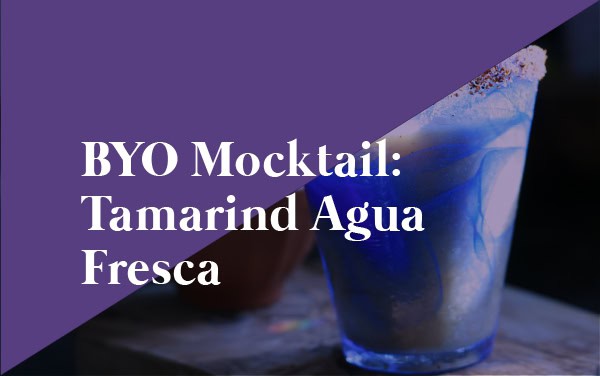
by RE Helper | Sep 18, 2022 | Alcohol Free, Blog, Helpful Tips, Mocktail, Recipe, Resources
At this point it sounds cliche, 2022 has been an a$$ kicker of a year. I’m very tired, but I’m also very sober, still. Sober because I was lucky enough to have built a large toolbox which I relied on a lot this year. When I tell you that I used ever single tool in there… I am not lying.
2022 has been the year I almost drank.
Fangwell judging me and also probably you.
For the most part I hang out with my pets and my husband. But among the highlights was a cruise to Alaska and I went to Bozeman to hang out with my sober friends, who are now like family.
Returning home, all I want to do is spend the long days of the end of summer on my back porch drinking something fancy and refreshing.
Therefore, I keep my mixing simple and to the point. I used fruit to keep it sweet and a topper of your choice of seltzer makes it unique!
Tamarind Mango Agua Fresca (AF)
Serves 2
Prep time: 5 minutes
Ingredients
- 1⁄2 cup Tamarind Nectar
- 1 t Tamarind puree
- 1⁄2 cup frozen mango
- 1 t honey
- 2T Tajin
- Fizzy water (your choice of flavor)
To make the drink
1- In a blender place the nectar, puree and frozen mango. Blend until smooth.
2- Rub the honey along the rim of the glasses and then dip the edges into Tajin.
3- Divide the mixture evenly and top with the fizzy water.
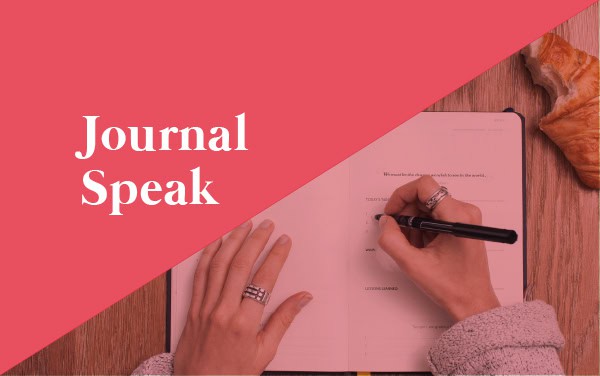
by Kerri MacFarlane | Aug 15, 2022 | Alcohol Free, Early Sobriety, Healing, Helpful Tips, Resources
Who doesn’t love practical tips that help us out with daily tasks? I know I do. And count me in if it is something to help me on my alcohol free journey.
Today I want to give you a practical quitting drinking tip that I recommend you try. This is called JournalSpeak™ which is probably the most informal, writing from cuff, type of journaling you can do. Paul learned about this type of journaling from a podcast called The Cure for Chronic Pain with Nicole Sachs. He was listening to her podcast about back pain that he had been experiencing, but the journaling technique she teaches is also applicable to ditching the booze. So today I’m hoping to bridge the gap.
Okay, let’s do it.
First…what is the point of JournalSpeak?
The point is to get unprocessed, uncomfortable emotions, out of you, and onto a piece of paper, a note, a napkin, post it note, a scroll, a computer screen, whatever. This also makes you feel less alone, it’s as if there are two of you. Another point is you begin connecting with you. Here at Recovery Elevator we do believe the opposite of addiction is connection as Johan Hari coined in a TED Talk. A major component of this is connecting with the raw, unheard, vulnerable, pissed off version of you.
When you feel a craving coming on, this is one of the best times to do this, because there’s a part of you screaming to be heard. ???
Now, let’s talk frequency.
Nicole recommends 20 minutes a day. I get it…that can be overwhelming to start with. So don’t start there. Paul started with 5 minutes first thing in the morning, and then 5 minutes at night before he went to bed, a couple times a week.
Also, you can use this “as needed” throughout the day. Sometimes, if Paul was feeling pissed or feeling fear he grabbed a pen and ‘just let it fly’. ✍?
When I say JournalSpeak – I’m not referring to you opening your leather bound diary, writing the date, and beginning with,
“Dear Diary,
Today…I went to work and my parking spot was taken…”
None of that. ??♀️?? In fact, I don’t recommend you keep any of this JournalSpeak. Get rid of it, that’s the point. Get it out of your body and onto the paper…then get rid of it. ??
JournalSpeak is full of incomplete sentences, horrible grammar, expletives ?…if you choose, shitty illustrations, and giving that pissed off, or sad little kiddo inside permission to speak. That’s really who is doing the talking.
Yes alcohol in itself is highly addictive, but most likely you are unconsciously (or consciously) using alcohol to repress emotions or shitty memories. Getting this excess mental baggage out of your head and onto paper is the beginning of letting it go. Once you’re done writing, throw it away, burn it, command A delete. It’s out, it’s gone. It’s been heard. The energy has been moved. Throw that shit away. ?? You don’t need it anymore. Make that part of the ritual, or routine, toss it. After all, it’s garbage. It’s not serving you.
Paul always felt better after his short JournalSpeak sessions. Sometimes he would go way longer than his five minute timer, things would just keep coming out. Let whatever wants to come out, come out. It may surprise you.
JournalSpeak can cure your pain. Physical and emotional pain. Is this woo-woo? Maybe. But Paul gives it a quantum spin. (He says his first car, at age 16, was a 1982 Volkswagen Quantum, which he feels qualifies him to talk about quantum science.) When you take a thought, which has an atomic weight swirling in your brain, and you place it on paper, two things happen…
- You lessen the energetic density of the thought in your own brain. It was in your brain and now part of it is in the form of graphite on paper (if you’re using a pencil).
- Next, when you see the thought in physical form, on paper, the thought/wave collapses. Almost like a wave landing on the shore. ? The energy of the thought hits the paper, and then softens.
Trust me, you will feel better after these JournalSpeak sessions. Paul says he’s batting 1000 on this one.
***Taken from Recovery Elevator Podcast, episode 389, host Paul Churchill***







